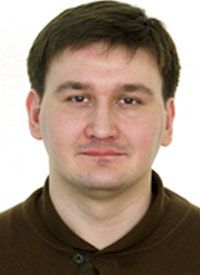New CRC Treatment Options May Emerge From Mutation Discordance Findings
Mutation discordance between primary and metastatic sites in colorectal cancer (CRC) may occur more often than previously understood, opening the door for potential new therapeutic approaches to treating the disease.
Mikhail Fedyanin, MD, PhD

Mikhail Fedyanin, MD, PhD
Mutation discordance between primary and metastatic sites in colorectal cancer (CRC) may occur more often than previously understood, opening the door for potential new therapeutic approaches to treating the disease.
A recent study, presented in the poster session at the 2016 ESMO Congress, found that discordance was identified in almost 30% of patients across several different mutations. In some cases, mutational status changed, and the treatment timeline may have played a role, said lead study author Mikhail Fedyanin, MD, PhD, Russian Academy of Medical Science.
“The concordance of mutational status between primary tumor and metastases in colorectal cancer is between 80% and 95%,” said Fedyanin. “But in our study, we have found that we have high discordance status, and essentially the situation is connected to the time between primary tumor resection and metastasectomy.”
Using DNA melting analysis and sequencing techniques, researchers detected mutation hot-spots in KRAS exons 2 and 3, NRAS exons 2 and 3, BRAF exon 15, and PIK3CA exons 9 and 20 in 148 tumor tissues from 65 patients.
Patients ranged from 31 to 76 years of age, and 48% were male. The average number of metastasectomies per patient was 1.3 (range, 1-5). Primary tumors were located in the right colon in 10.8% of patients, in the left colon in 35.4%, and in the rectum in 53.8%. The median time between the resection of the primary tumor and metastasectomy was 13 months (range, 1-63). Most patients (88%) received chemotherapy before metastasectomy.
Among all patients, 43.1% were identified as havingKRASmutations, 13.8% hadPIK3CAmutations, and 3.1% of patients hadNRASandBRAFmutations, respectively. The aim of the study was to find factors associated with the discordance ofKRAS,NRAS,BRAF, andPIK3CAmutation status between the primary tumors and metastases in patients with CRC.
Discordance of mutation status of genes was identified in 29.2% of patients in total; 16.9% inKRAS, 3% inNRAS, 12.3% inPIK3CAand 3% in those withBRAFstatus. In all cases of metastases in the brain, discordance was identified inKRASandPIK3CAmutation status (P= .08). Peritoneal metastases had discordance in KRAS status (P= 0.02).
One surprising finding was that patients with mutantRASin the primary tumor had a higher chance of a changedRASstatus in metastases than patients with wild-typeRASin primary tumors (OR, 4.5; 95% CI, 1.07-10.08,P= 0.04), said Fedyanin.
“This situation is strange because we have found thatKRASstatus was changing in patients that have mutation ofKRASin the primary tumor, and one of the metastases doesn’t have the mutation,” said Fedyanin. “Therefore if this is true, we can think about using JAK inhibitor antibodies.”
Age, sex, number of organs with metastases, tumor grade, mucinous component, adjuvant chemotherapy, radiotherapy, site of primary tumors, and other localization of metastases did not influence the discordance in mutation status.
Liquid biopsy, which extracts circulating tumor cells, cell-free DNA, or exosomes from blood and urine, was key to determining the study’s findings, said Fedyanin. It allowed researchers to understand how the mutational status changed throughout the study without additional invasive procedures.
“Our study is based on the use of liquid biopsy,” he said. “During the treatment, we see many changes in mutation. Therefore, we cannot biopsy each metastasis in our patients. When we use liquid biopsy, we can find the whole spectrum of mutations every time.”
Reference:
Fedyanin M, Stroganova A, Senderovich A. Factors associated with disconcordance of KRAS, NRAS, BRAF, PIK3CA mutation status in the primary tumor and metastases in patients (pts) with colorectal cancer (CRC). Presented at: 2016 ESMO Congress; October 7-11, 2016; Copenhagen, Denmark. Abstract 529P.
Retrospective Data Demonstrates Efficacy of Regorafenib in mCRC
April 16th 2024During a Case-Based Roundtable® event, Madappa Kundranda, MD, PhD, discussed recent retrospective studies that compared outcomes between the available treatment options in patients with relapsed/refractory advanced colorectal cancer in the first article of a 2-part series.
Read More
KEYNOTE-859 Outcomes Influence NCCN Guidelines on Pembrolizumab in Upper GI Cancer
April 10th 2024During a Case-Based Roundtable® event, David Zhen, MD, discussed how treatment of upper gastrointestinal cancer with pembrolizumab and chemotherapy is impacted by PD-L1 composite positive score, in the second article of a 2-part series.
Read More